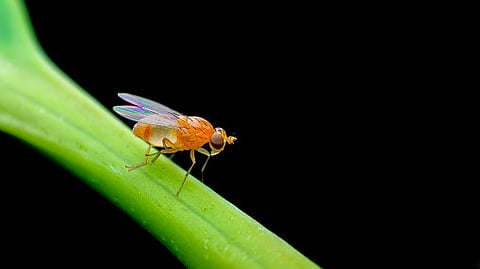Electrophysiological measurements in active flies
The JMU group figured out that the physical activity of the fly has a strong effect on its insulin-producing cells. For the first time, the researchers measured the activity of these cells electrophysiologically in walking and flying Drosophila.
The result: when Drosophila starts to walk or fly, its insulin-producing cells are immediately inhibited y. When the fly stops moving, the activity of the cells rapidly increases again and shoots up above normal levels.
"We hypothesize that the low activity of insulin-producing cells during walking and flight contributes to the provision of sugars to meet the increased energy demand," says Dr. Sander Liessem, first author of the publication. "We suspect that the increased activity after exercise helps to replenish the fly's energy stores, for example in the muscles."
Blood sugar plays no role in the regulation
The JMU team was also able to demonstrate that the fast, behavior-dependent inhibition of insulin-producing cells is actively controlled by neural pathways. "It is largely independent of changes in the sugar concentration in the fly's blood," explains co-author Dr. Martina Held.
It makes a lot of sense for the organism to anticipate an increased energy demand in this way to prevent extreme fluctuations in blood sugar levels.


